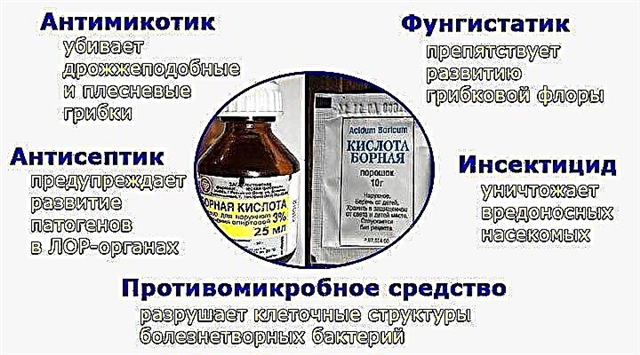In the absence of pathological processes in the respiratory organs, the mucous membrane of the oropharynx has a pink color. White plaque in the throat of a child is a symptom signaling the development of inflammation in lymphadenoid tissues and ciliated epithelium.
 The cause of catarrhal and purulent processes is the multiplication of pathogenic viruses, fungi or microbes.
The cause of catarrhal and purulent processes is the multiplication of pathogenic viruses, fungi or microbes.
Treatment of ENT disease should be carried out under the supervision of a pediatrician after an accurate diagnosis.
Untimely elimination of foci of inflammation contributes to the progression of infection and the spread of pathological processes. Antimicrobial, antifungal and antiviral agents can be used to eliminate purulent plaque on the tonsils and the walls of the throat.
Plaque reasons
Why does a white plaque appear on the tonsils in a child?
Plaque formation is a sign of the intense work of the body's immune system.
When the pathogenic flora penetrates into the lacunae of the glands, neutrophils, phagocytes and T-lymphocytes begin to attack them. As a result, a purulent plaque forms on the surface of lymphadenoid tissues, which consists of degenerated pathogens, tissue detritus and neutrophilic leukocytes.
Delayed treatment of purulent inflammation can lead to the development of sepsis.
Over time, the consistency of the purulent exudate becomes thicker and gets an unpleasant odor. In plaque, as a rule, pathogen cells are always present, which provoked suppuration. For this reason, for an accurate diagnosis and determination of the type of pathogen, the specialist takes a swab from the throat for microbiological analysis.
Diseases
Plaque on the throat and tonsils is a clear sign of infectious inflammation of the mucous membranes. The principles of treatment of ENT pathology depend on the location of the lesions, the nature of the infectious agent and associated clinical manifestations.
 What are the causes of plaque on the throat? The appearance of a symptom may be due to the development of the following pathologies:
What are the causes of plaque on the throat? The appearance of a symptom may be due to the development of the following pathologies:
- pharyngomycosis;
- tonsillitis;
- angina Simanovsky-Vincent;
- stomatitis; oral leukoplasia;
- diphtheria;
- cysts on the tonsils.
It should be noted that young children suffer from infectious diseases more often than adults.
This is due to the low reactivity of the body and the lack of adaptive immunity that occurs when suffering diseases. If local manifestations of ENT pathologists are detected, the visit to the pediatrician cannot be postponed. Delayed treatment of the disease can cause serious complications, including paratonsillar abscess, otitis media, sinusitis, etc.
Pharyngomycosis
Pharyngomycosis is an infectious lesion of the mucous membranes of the oropharynx, which has a fungal etiology. The disease may be preceded by cheilitis, stomatitis, gingivitis and other dental pathologies. The causative agents of infection are most often yeast-like (Candida) or mold (Geotrichum) fungi.
The characteristic clinical manifestations of the disease include:
- tickling and rawness in the throat;
- general malaise;
- the presence of white plaque in the oropharynx;
- subfebrile fever;
- cervical lymphadenitis;
- headache;
- feeling of a lump in the throat when swallowing.
 A white strip on a child's amygdala signals the location of fungal pathogens.
A white strip on a child's amygdala signals the location of fungal pathogens.
Most often, pathogens multiply in the follicles of the tonsils and on the lymphoid tissue of the posterior pharyngeal wall. The disease is treated with intrapharyngeal and systemic use of antifungal drugs.
A primary role in the appearance of a fungal disease and, accordingly, white plaque on the tonsils, is played by a decrease in immunity, which may be associated with the development of ARVI.
Tonsillitis
Angina (acute tonsillitis) is a severe infectious disease characterized by damage to the main components of the pharyngeal ring. ENT pathology develops as a result of the multiplication of pathogenic bacteria or viruses, less often yeast-like fungi. The appearance of inflammatory reactions is evidenced by hypertrophy of the palatine tonsils and edema of the mucous membranes of the oropharynx.
In most cases, white plaque on the tonsils occurs due to the development of follicular or purulent forms of acute tonsillitis. Typical manifestations of the disease are:
- sore throat;
- subfebrile and febrile fever;
- enlargement of the submandibular lymph nodes;
- fibrous-purulent plaque on the tonsils;
- general symptoms of intoxication.
The clinical manifestations of the disease are similar to the symptoms of ARVI, however, with the development of a viral disease, hypertrophy of the lymph nodes is extremely rare. Acute angina can be diagnosed by instrumental studies, during which a specialist takes a biomaterial from the pharynx for microbiological analysis and an antigenic test.
Untimely removal of purulent plaque is fraught with a decrease in tissue reactivity and generalization of pathological processes leading to the development of a pharyngeal abscess.
Treatment of pathology is carried out with the help of antibiotics, solution antiseptics and anti-inflammatory and analgesic drugs. If necessary, the child is given antipyretic and antiallergic drugs that reduce tissue swelling and make breathing easier.
Angina Simonovsky-Paut-Vincent
Ulcerative membranous tonsillitis is characterized by acute inflammation of the palatine tonsils, in which off-white ulcers form on the surface of the mucous membranes. The development of ENT disease is facilitated by the weakening of the immune defense, dental caries and mechanical trauma to the oropharynx. Infectious processes are provoked by two types of bacteria - spirochete and spindle-shaped bacillus, which live in the oral cavity of healthy children.
Plaque on the tonsils without temperature most often signals the development of ulcerative membranous tonsillitis.
 Additional clinical manifestations of the disease include:
Additional clinical manifestations of the disease include:
- enlarged glands;
- discomfort when swallowing;
- an increase in regional lymph nodes;
- profuse salivation;
- grayish-white bloom on the soft palate and tonsils.
Important! A protracted course of inflammatory processes can lead to soft tissue necrosis.
Treatment of children is carried out mainly with the help of topical preparations.
Rinsing the oropharynx with antiseptic and anti-inflammatory solutions prevents the spread of infection. In case of ineffectiveness of sanitizing procedures, the treatment regimen includes taking antibiotics of the penicillin and cephalosporin series.
Leukoplakia
The defeat of the mucous membranes of the oropharynx, characterized by keratinization of the stratified epithelium, is called leukoplakia. The formation of white plaque is due to the reaction of the mucous membranes to the effects of exogenous or endogenous stimuli. Most often, leukoplakia occurs in children suffering from gastrointestinal reflux, in which gastric juice is thrown into the esophagus.
Erosive and verrucous forms of the disease can cause malignant tumors in the oropharynx.
Untimely elimination of irritating factors can lead to the transformation of the affected areas of the mucous epithelium and the development of cancer. To eliminate white plaque and keratinized areas of the mucous membrane, sanitizing procedures and conservative therapy preparations are used. Competent treatment prevents the chronicization of pathological processes and contributes to the regression of leukoplakia.
Stomatitis
 Stomatitis is a lesion of the mucous membranes of the oropharynx with ulcerative formations. The development of the disease is associated with an inadequate response of the immune system to the effects of exogenous stimuli. In the presence of autoimmune malfunctions, leukocytes begin to attack the cells of the ciliated epithelium, as a result of which white erosive formations appear on the surface of the throat, tonsils, gums and soft palate.
Stomatitis is a lesion of the mucous membranes of the oropharynx with ulcerative formations. The development of the disease is associated with an inadequate response of the immune system to the effects of exogenous stimuli. In the presence of autoimmune malfunctions, leukocytes begin to attack the cells of the ciliated epithelium, as a result of which white erosive formations appear on the surface of the throat, tonsils, gums and soft palate.
The provocateurs of pathological changes in the mucous membrane of the oropharynx can be helminthic invasions, gastritis, gastrointestinal dysfunction, colitis, lack of hygiene, duodenitis, etc.
The development of stomatitis in children is facilitated by hypovitaminosis, iron deficiency anemia and thermal burns.
The development of stomatitis is signaled by:
- hypersalivation (salivation);
- bad breath;
- ulcers and white plaque on the mucous membranes;
- bleeding gums.
In most cases, stomatitis goes away on its own within 1-2 weeks. To speed up the healing process of erosive formations, you can rinse the oropharynx with medicinal decoctions based on St. John's wort, calendula, chamomile or sage.
Diphtheria
Diphtheria is a rare disease in which there is damage to the mucous membranes of the larynx and oropharynx. The causative agent of the infection is the diphtheria bacillus (Leffler's bacillus), which is transmitted by airborne droplets. The development of pathology is signaled by severe intoxication, in which children complain of headaches, discomfort in the throat, shortness of breath, fever and lack of appetite.
Local manifestations of diphtheria include:
- swelling of the throat;
- hyperemia of the mucous membranes of the pharynx;
- hypertrophy of the palatine tonsils;
- membranous plaque on the tonsils and soft palate;
- enlargement of the cervical lymph nodes.
 Diphtheria bacillus damages nerve cells, which can lead to paralysis of the soft palate, vocal cords, or airways. In view of the complex course of the pathology, the treatment of children is carried out in stationary conditions under the supervision of an infectious disease specialist. It is possible to eliminate the causative agent of infection in the body with the help of antitoxic anti-diphtheria serum. In case of damage to the mucous membranes of the oral cavity, sanitation of the oropharynx with disinfectant solutions is indicated. In order to reduce the signs of general intoxication of the body, drip administration of a glucose-potassium mixture, albumin and ascorbic acid is prescribed.
Diphtheria bacillus damages nerve cells, which can lead to paralysis of the soft palate, vocal cords, or airways. In view of the complex course of the pathology, the treatment of children is carried out in stationary conditions under the supervision of an infectious disease specialist. It is possible to eliminate the causative agent of infection in the body with the help of antitoxic anti-diphtheria serum. In case of damage to the mucous membranes of the oral cavity, sanitation of the oropharynx with disinfectant solutions is indicated. In order to reduce the signs of general intoxication of the body, drip administration of a glucose-potassium mixture, albumin and ascorbic acid is prescribed.



